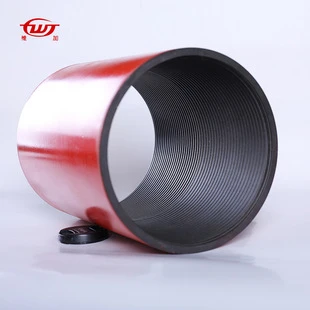- Afrikaans
- Albanian
- Amharic
- Arabic
- Armenian
- Azerbaijani
- Basque
- Belarusian
- Bengali
- Bosnian
- Bulgarian
- Catalan
- Cebuano
- Corsican
- Croatian
- Czech
- Danish
- Dutch
- English
- Esperanto
- Estonian
- Finnish
- French
- Frisian
- Galician
- Georgian
- German
- Greek
- Gujarati
- Haitian Creole
- hausa
- hawaiian
- Hebrew
- Hindi
- Miao
- Hungarian
- Icelandic
- igbo
- Indonesian
- irish
- Italian
- Japanese
- Javanese
- Kannada
- kazakh
- Khmer
- Rwandese
- Korean
- Kurdish
- Kyrgyz
- Lao
- Latin
- Latvian
- Lithuanian
- Luxembourgish
- Macedonian
- Malgashi
- Malay
- Malayalam
- Maltese
- Maori
- Marathi
- Mongolian
- Myanmar
- Nepali
- Norwegian
- Norwegian
- Occitan
- Pashto
- Persian
- Polish
- Portuguese
- Punjabi
- Romanian
- Russian
- Samoan
- Scottish Gaelic
- Serbian
- Sesotho
- Shona
- Sindhi
- Sinhala
- Slovak
- Slovenian
- Somali
- Spanish
- Sundanese
- Swahili
- Swedish
- Tagalog
- Tajik
- Tamil
- Tatar
- Telugu
- Thai
- Turkish
- Turkmen
- Ukrainian
- Urdu
- Uighur
- Uzbek
- Vietnamese
- Welsh
- Bantu
- Yiddish
- Yoruba
- Zulu
Understanding the Function and Types of Well Casing Couplings in Drilling Operations
Understanding Well Casing Couplings Essentials for Efficient Drilling Operations
In the realm of oil and gas exploration, the integrity and efficiency of drilling operations are paramount. One key component that ensures both is the well casing coupling. This critical element serves as a connector between sections of casing pipe, facilitating the secure assembly of the casing string that lines the borehole.
What is Well Casing?
Before delving into the specifics of casing couplings, it is essential to understand what well casing entails. Well casing is a series of steel pipes cemented into the borehole to provide support and stability to the wellbore, prevent the collapse of the hole, and protect groundwater resources. The casing not only maintains the integrity of the well but also allows for the safe extraction of hydrocarbons and the prevention of fluid migration.
The Role of Casing Couplings
Casing couplings are short lengths of pipe used to connect the individual casing joints. They are crucial in the assembly process, as they permit the connection of various casing sizes and types. A properly designed coupling ensures that the casing is secure and minimizes the risk of leaks and other complications that could arise during drilling or production.
Couplings are manufactured using durable materials, often steel or alloy, to withstand the extreme pressures and temperatures encountered in deep well settings. Their design is also tailored to accommodate various casing sizes and threading types, including API (American Petroleum Institute) standards, which govern the manufacturing and testing of oil and gas equipment.
Types of Casing Couplings
There are several types of casing couplings available, each tailored for specific applications
well casing coupling

1. Standard Couplings Often used for conventional casing, these couplings feature a simple design and are suitable for a range of drilling conditions.
2. Premium Couplings Designed to enhance the performance of the casing system, premium couplings provide superior strength and are often used in high-pressure or challenging environments.
3. Long Couplings These are extended versions of standard couplings, offering increased effective length for specific applications that require greater flexibility in casing alignment.
4. Specialty Couplings Tailored for unique well conditions or operational challenges, these couplings offer innovative designs to meet specific industry needs.
Importance of Quality Control
Quality control in the manufacturing of casing couplings is critical. Inadequate or faulty couplings can lead to significant operational failures, including casing collapses, loss of well integrity, and environmental hazards. Therefore, it is essential that manufacturers adhere to rigorous testing protocols and industry standards to ensure the reliability and safety of their couplings.
Conclusion
In conclusion, well casing couplings are fundamental components in the oil and gas drilling industry, playing a vital role in ensuring the stability and safety of drilling operations. Their design, material quality, and functionality are essential for maintaining well integrity and facilitating efficient hydrocarbon extraction. As the industry continues to evolve, the importance of high-quality casing couplings will remain central to successful drilling endeavors, underscoring the necessity for ongoing innovation and excellence in manufacturing. Understanding and selecting the right coupling can make a significant difference in the outcome of drilling projects, ensuring both economic viability and environmental safety.
-
Tubing Pup Joints: Essential Components for Oil and Gas OperationsNewsJul.10,2025
-
Pup Joints: Essential Components for Reliable Drilling OperationsNewsJul.10,2025
-
Pipe Couplings: Connecting Your World EfficientlyNewsJul.10,2025
-
Mastering Oilfield Operations with Quality Tubing and CasingNewsJul.10,2025
-
High-Quality Casing Couplings for Every NeedNewsJul.10,2025
-
Boost Your Drilling Efficiency with Premium Crossover Tools & Seating NipplesNewsJul.10,2025







